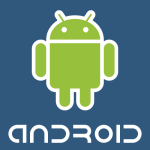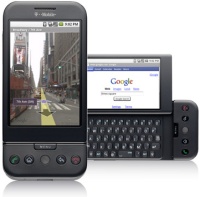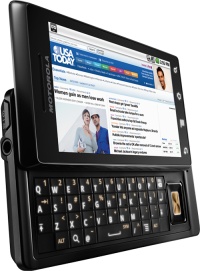 Looking back on Android’s first year on the market, there’s no denying that things have been rocky for Google’s ambitious mobile platform. There was little hardware diversity for the better part of the year, and with the hype surrounding the release of the Palm Pre, Android seemed almost instantly dated. For all of its initial hype, the platform never really seemed like much of a threat to the iPhone, and in many ways it was barely competing. It seemed as if Android was going to celebrate its first birthday merely running on the fumes of excitement from its launch.
Looking back on Android’s first year on the market, there’s no denying that things have been rocky for Google’s ambitious mobile platform. There was little hardware diversity for the better part of the year, and with the hype surrounding the release of the Palm Pre, Android seemed almost instantly dated. For all of its initial hype, the platform never really seemed like much of a threat to the iPhone, and in many ways it was barely competing. It seemed as if Android was going to celebrate its first birthday merely running on the fumes of excitement from its launch.
The announcement of the Motorola Droid’s upcoming release on Verizon’s formidable 3G network changed all of that. In short order, news of the Droid got people excited about Android again – something which would have seemed almost unfathomable just a few weeks ago. I’d like to take a look at just how far Android has come with the announcement of the Droid, and how it shows things are looking much brighter for the platform come year two.
Android Year One: A great start, then nada
 The first Android phone, the T-Mobile G1, was announced on September 23, 2008, and it hit stores in the U.S. just one month later. I’ll admit, even I drooled over the device for some time, but the G1’s battery issues, bulkiness, and Android’s overall lack of polish kept me away. It managed to sell one million units in its first six months–around the same time Cupcake, the first major update for Android, was released.
The first Android phone, the T-Mobile G1, was announced on September 23, 2008, and it hit stores in the U.S. just one month later. I’ll admit, even I drooled over the device for some time, but the G1’s battery issues, bulkiness, and Android’s overall lack of polish kept me away. It managed to sell one million units in its first six months–around the same time Cupcake, the first major update for Android, was released.
Unfortunately, American users waiting for a better Android phone than the G1 had to hold out for some time. The T-Mobile MyTouch 3G (known elsewhere as the HTC Magic) wasn’t released until August 5, 2009.
This may be the biggest mistake in Android’s first year. While the Palm Pre steadily gathered hype from its announcement in January until its release in June, and Apple released the iPhone 3GS in June as well, all seemed exceedingly quiet on the Android front. The HTC Magic was announced in February, and started trickling out to European and Asian countries around May. Had they pushed for it, Google could have helped HTC and T-Mobile bring out the Magic in the U.S. before June. Instead they waited and lost countless potential customers to Palm and Apple.
The third major Android device, the HTC Hero, was released on Sprint’s network in early October. While it garnered respectable reviews, it wasn’t the sort of device that would make people join Sprint in droves. It was more of a holdover device to get Sprint users in on the Android experience.
The Droid’s impact on Android
 Boy Genius was the first to unveil some specifics on the Motorola Droid, and when they did so things got real. Obviously, the Boy Genius folks were somewhat enamored with the phone, and a further look at the Droid made that even more abundantly clear. We learned that the Droid would be running a very fast processor on the new Android 2.0 software, sport a large 3.7″ high resolution screen, feature a 5-megapixel camera, and perhaps most importantly, it fit a slide-out keyboard in a frame not much thicker than the iPhone. We also wouldn’t have to wait too long for it since we learned Verizon was aiming for a November 6, 2009 release. The more we learned about it, the more reasons we found to get excited – which was something we hadn’t experienced with Android since prior to the release of the G1.
Boy Genius was the first to unveil some specifics on the Motorola Droid, and when they did so things got real. Obviously, the Boy Genius folks were somewhat enamored with the phone, and a further look at the Droid made that even more abundantly clear. We learned that the Droid would be running a very fast processor on the new Android 2.0 software, sport a large 3.7″ high resolution screen, feature a 5-megapixel camera, and perhaps most importantly, it fit a slide-out keyboard in a frame not much thicker than the iPhone. We also wouldn’t have to wait too long for it since we learned Verizon was aiming for a November 6, 2009 release. The more we learned about it, the more reasons we found to get excited – which was something we hadn’t experienced with Android since prior to the release of the G1.
Verizon also launched an aggressive ad campaign for the Droid which specifically targeted the iPhone’s faults. While some of the points covered may seem too geeky for mainstream users, I think the commercial successfully conveyed the idea that this phone was different, and that it would be something to look out for. Coupled with the “There’s a map for that” commercial, which pointed out how much more larger Verizon’s 3G coverage is in the U.S. compared to AT&T, Verizon had delivered a one-two punch targeted at the iPhone’s biggest issues.
And if the phone alone wasn’t tempting enough, Google dropped a bombshell last week when they announced that their free Google Maps Navigation application would be exclusive to Android 2.0. With the Droid being the only Android 2.0 phone on the market come November, buying a Droid will be the only way to take advantage of this software (which is sure to have devastating effects on the GPS market as a whole). Paying for the privilege of turn-by-turn GPS was the de facto standard in the cellphone industry until this application, and it’ll be interesting to see how others compete. Currently, you have to pay $100 for the Tom Tom iPhone application. This is surely not something that can exist for much longer.
Ultimately, the Droid helped put Android back on the map – just in time for the holiday season.
Moving forward
The Droid pushes the bar considerably for all other smartphone manufacturers. It trounces most of them in pretty much every aspect of hardware capacity, and it will be running a more polished version of the Android operating system. There’s no doubt that Apple, Palm, RIM, and Windows Mobile manufacturers will have to judge all of their future devices against it.
And perhaps most importantly, it proves that Android may actually be a legitimate threat to the iPhone hegemony. Android doesn’t have to wait for one company to come up with a great new phone every year (and yes, I realize the irony of this statement since it took more than a year to get the Droid). Anyone can just come along and try to one-up the Droid. I suspect we’ll be seeing Android hardware evolving rapidly over the next few years, all the while Apple is stuck with their current release schedule.
Apple should be afraid of this decentralized strategy more than anything, because the Android invasion is coming.
About the author:
Devindra Hardawar is a tech/film blogger and podcast host. You can find him writing at the Far Side of Tech and Slashfilm.



























